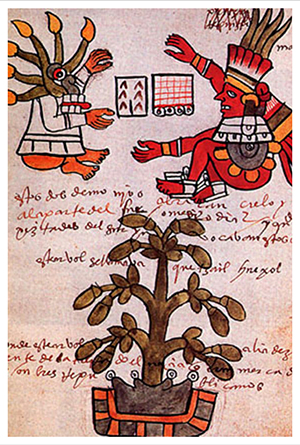THE HISTORY OF COCOA
“A beautiful Aztec princess was left to guard the treasure of her groom, who had left for war.
One day she was attacked by enemies who wanted to force her to reveal where the treasure was.
The princess preferred to die rather than reveal the secret.
Legend has it that from her blood sprang a plant with seeds as bitter as her suffering, as strong as her virtue, and as red as her blood.
It was the cocoa plant.”
It was actually the Maya who first used the cocoa plant.
They prepared a drink called “Xocolatl” by mixing water and spices with the powder made by crushing roasted cocoa beans.

It is discovered between 1540 and 1550.
Girolamo Benzoni was the first to taste it and judged it, “more food for pigs than for men,” but later the Florentine Francesco Carletti in the early 1600s breaking the Spanish monopoly began to import cocoa into Italy.
The story goes that the first sack of cocoa arrived in Spain in 1585.
Cacao is subjected to a long production chain that extends from the small landowner, often in remote and technologically backward tropical regions, to factories and consumers in highly developed industrial countries.
Like any crop, it is susceptible to climate change and disease, and social and economic factors.
Cocoa supply continued to grow between the 1980s and 1990s despite low world market prices.
At the same time, demand for cocoa has settled with supply and increased firmly.
The price of cocoa is determined in the open markets of New York and London based on supply and demand.
